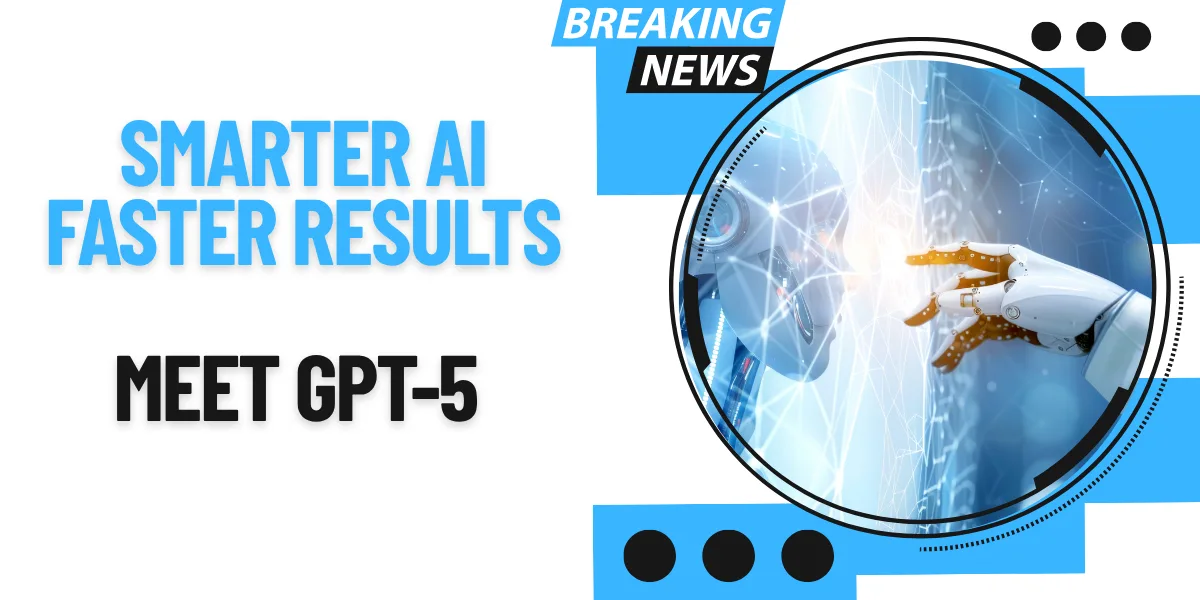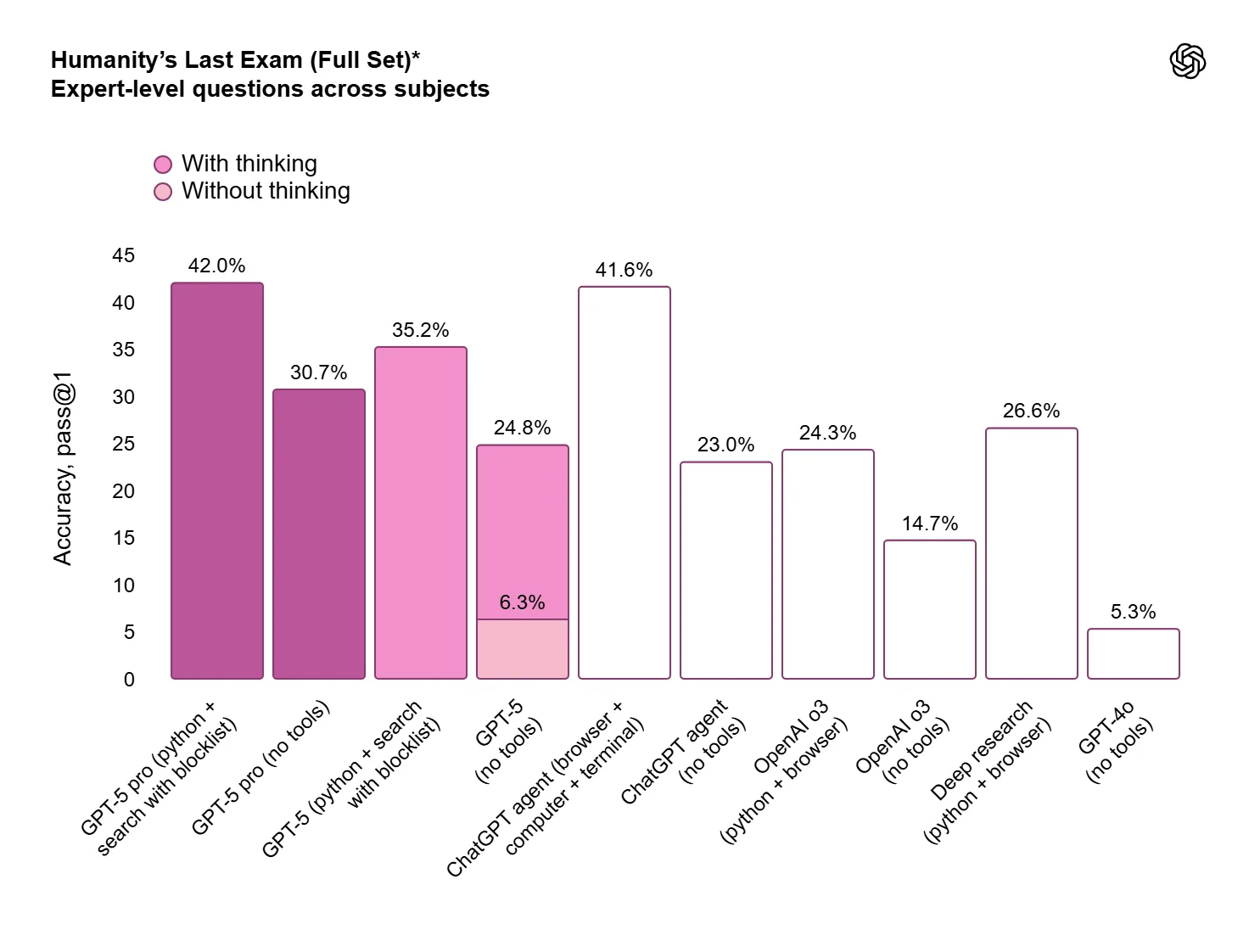Meet GPT-5: OpenAI’s New Smarter, Faster AI
- August 9, 2025
- 9:02 pm

On August 7, 2025, OpenAI finally released GPT-5 — the biggest leap in ChatGPT’s history.
This isn’t just a faster response engine or a slightly better version of GPT-4. It’s a unified AI system that
decides, in real time, whether to give you an instant answer or pause and think through a complex problem.
The result is a tool that feels less like a chatbot and more like a capable partner you can actually rely on.
Previous versions made you choose between speed and reasoning power. GPT-5 removes that choice.
It combines a smart, efficient model for everyday queries with a deeper reasoning model
(GPT-5 Thinking) for high-stakes or complex tasks. A real-time router chooses between them
automatically, based on your question, context, and even explicit cues like typing “think hard about this.”
Once you hit your usage cap, a mini version keeps the conversation going without cutting you off completely.
Benchmarks: From Math to Multimodal
OpenAI’s own evaluations show GPT-5 setting new state-of-the-art scores across a wide range of tasks:
- Math: 94.6% on AIME 2025 without tools.
- Coding: 74.9% SWE-bench Verified; 88% Aider Polyglot multi-language code editing.
- Health: 46.2% on HealthBench Hard, with context-aware, proactive answers.
- Multimodal: 84.2% MMMU (college-level visual reasoning); 84.6% MMMU Pro (graduate-level).
- Instruction Following: 69.6% on Scale MultiChallenge for multi-turn, tool-assisted workflows.
These aren’t just academic numbers. They mean GPT-5 is better at real-world tasks like debugging large codebases,
interpreting complex charts, or drafting nuanced policy briefs without losing context.
What Feels Different in Real Use
After trying GPT-5 myself, the most noticeable shift is in trust. It’s far less likely to bluff an answer
or fill in gaps with made-up facts. When it can’t do something, it tells you — and that’s a major step forward in usability.
Coding That Understands Design
Yes, it can write code — but GPT-5 also grasps design principles. Spacing, typography, and visual hierarchy aren’t afterthoughts.
In my tests, it built front-end interfaces that looked like they’d been crafted by a developer with an eye for detail.
Creative Writing With Real Depth
From unrhymed iambic pentameter to non-linear storytelling, GPT-5 handles complex creative forms without breaking structure.
It’s more like working with a collaborator who gets your vision than a tool you have to babysit through every draft.
Health Advice That Respects Boundaries
While it’s not a medical professional, GPT-5 is better at helping you prepare for appointments, understand results,
and ask smarter questions. It adapts its answers to your knowledge level and context, which makes health conversations more productive.
Safety, Honesty, and Reliability
- Fewer Hallucinations: ~45% fewer factual errors than GPT-4o; ~80% fewer than o3 in reasoning mode.
- Reduced Deception: From 4.8% (o3) to 2.1% (GPT-5 reasoning).
- Lower Sycophancy: From 14.5% to under 6% — meaning it’s less likely to just agree with you.
- Safe Completions: Answers at a safe level of detail when full detail could be risky, with clear reasoning for refusals.
All the upgrades make GPT-5 more dependable in high-stakes work.
For example, in marketing analytics, it will flag missing data instead of inventing numbers,
which can save you from costly mistakes.
Why Marketers and Creators Should Care
For anyone in marketing, content, or product development, GPT-5 offers both creative muscle and operational efficiency:
- Brand Voice at Scale: Maintain tone and terminology across hundreds of assets.
- Rapid Creative Testing: Use reasoning mode to trial campaign hooks in days, not weeks.
- Integrated Multimodal Packs: Generate copy, images, and even audio in one workflow.
- Localized Campaigns: Adapt to cultural nuance while keeping brand cohesion.
- Data-Driven Refreshes: Plug in performance data and instantly produce improved variants.
Faster Thinking, Lower Costs
OpenAI reports GPT-5 achieves similar or better accuracy than o3 while using 50–80% fewer output tokens in reasoning mode.
That means faster execution and lower compute costs — an under-appreciated win if you use AI at scale.
The Bottom Line
GPT-5 is not just about higher benchmark scores. The unified model approach, practical safety gains, and design-aware coding make it feel like an actual teammate.
Frequently Asked Questions

Dobromir Todorov
ProdigYtal
Digital Marketing Specialist with 10+ years of experience, driving impactful, data-driven growth.
